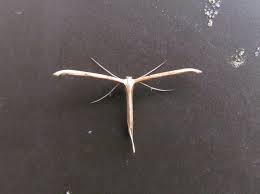I’ve decided in 2015 to try and learn a different taxon group. I may even put birds on the back burner (in a non-professional sense) to concentrate on something else. A bit drastic I know but I don’t really want to be a one trick pony (who lets face it can’t always get the trick right!) and would love to broaden my naturalist horizon. Fungi appealed to me towards the end of last year and is a group I’ll take more interest in for sure. How about molluscs? More specifically slugs and snails, it’s niche and I’ve got two excellent books on them but they don’t really get me going if I’m honest. Now I’ve had a moth trap for coming up to five years which I’ve used most weeks in the summer months. Bingo! Moths it is, I’ve got the gear, I’ve some field guides, the local county recorder lives in my town, and the moths can come to you, not the other way around!
My local county recorder is Steve Hind (more specifically, the micro-moth recorder) and I paid him a visit before Christmas. He is a font of knowledge and provided great help, put me in contact with a local forum, and recommended me a load of books and journals. One of which was the ‘Common Micro-moths of Berkshire.’ This is slightly odd as I live in Cheshire, but I was assured only 6 of the moths in the book don’t occur in Cheshire at the moment. I had a quick flick through it and thought it looked great, so a month and £10 later I bought it.
Now micro-moths haven’t had a dedicated field-guide to them for one very good reason, there are literally thousands of them! And most of them don’t have an English name, instead most have scientific two part names. So they haven’t been all that accessible to the budding moth enthusiast (should they be called mothers perhaps? Maybe not.). This was rectified a couple of years ago with the publication of a dedicated field guide by Stirling and Parsons. But still the sheer number of them can be overwhelming; which is where ‘Common Micro-moths of Berkshire’ comes in.
I have to say the book is excellent, it covers 103 species of moth which are the most commonly recorded in Berkshire. There is an easy access thumbnail selection to quickly narrow down a potential moth at the start of the book and then a full page description of each moth, along with hinting at other moths your selection may be similar to. For example one of my favourite micro-moths is Emmelina monodactyla or ‘Common Plume,’ which I think looks like one of these:


There is a brief description of the habitat of the Common Plume which is stated as a ‘variety of different habitats’ and whose status is ‘Common’ and then gives a detailed description of what it looks like highlighting important features to look out for, hopefully leading to an easy ID. If not than my potential Common Plume could, according to the similar species given, be a Stenopyilia bipunctidactyla or a S. pterodactyla. There is also a handy graph giving the flight seasons (when are you likely to see an adult flying moth?) although this is less helpful in more northern Cheshire than it would be if I lived in Berkshire. The guide does this pretty well for every moth, most of which are far less distinctive than the Common Plume. Because it is limited to common micro-moths which are you are more likely to catch in a light trap or whilst on a walk it doesn’t overwhelm you with hundreds of options to choose from. I definitely think you can use it in conjunction with the comprehensive Stirling and Parsons guide though, especially as not every description gives clues as to whether the moths are attracted to light or sugar, or are day-flying for instance.
The other thing to remark upon is that the production values of the book are superb. The book looks like it could have come from a major publishing house. It hasn’t. It comes from a local enthusiast group, the Berkshire Moth Group. It is incredibly professional looking, well laid out, glossy pages, a good index, and an appendix which goes into more detail with more alternative species similar to ones found in the main body of the book. There are a few errors which are highlighted in an Errata print-out loosely included at the beginning of the book, including a few mislabelled photographs which would unfortunately confuse IDs. But on the whole these shouldn’t distract from this fantastic book which I would recommend to any naturalist.
So I think I’ve got it. Moths it is for the year (OK maybe I can begin to look at slugs and snails too, and perhaps fungi, and maybe lichen. Perhaps also bryophytes, or perhaps beetles, or hoverflies, spiders even? Possibly.)
Book available from http://www.nhbs.com for £9.99.
Both photos from Wikicommons.
Nice to hear you are delving into moths! I got a new book not long ago and the pictures are fantastic – its called “concise guide to the moths of great Britain and Ireland by Martin Townsend and Paul Waring.” If you don’t have it already i would recommend 🙂
Also Butterfly Conservation have an offer for a years free membership if you aren’t a member already. You can meet some really helpful people through your local branch!
http://butterfly-conservation.org/4467/free-membership-offer.html
Happy ‘mothing’!
I’ve got that book, it’s seriously good, pretty essential too! I’ll have a look at membership, I was a member until I had to conserve my personal finances unfortunately, so free membership is enticing!